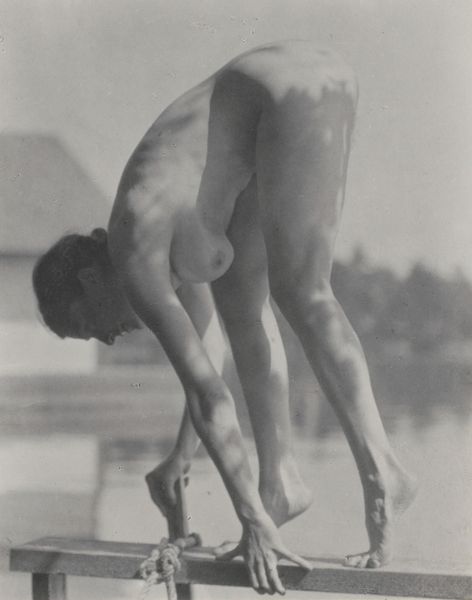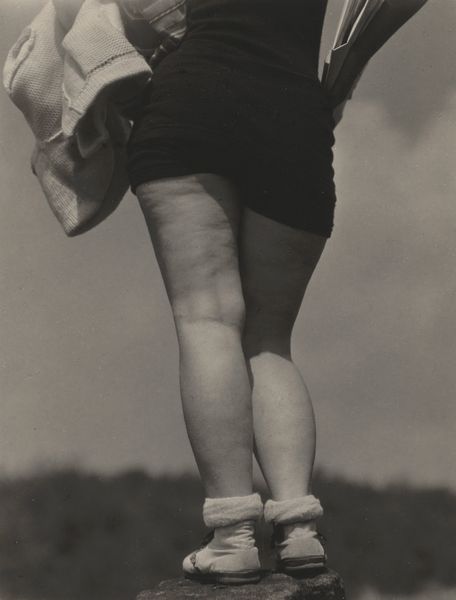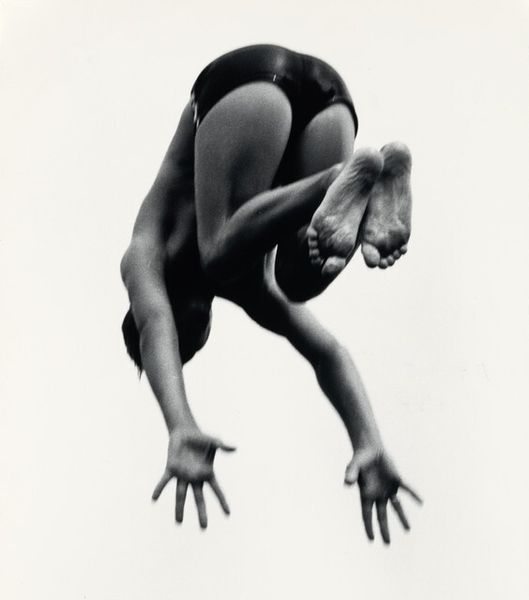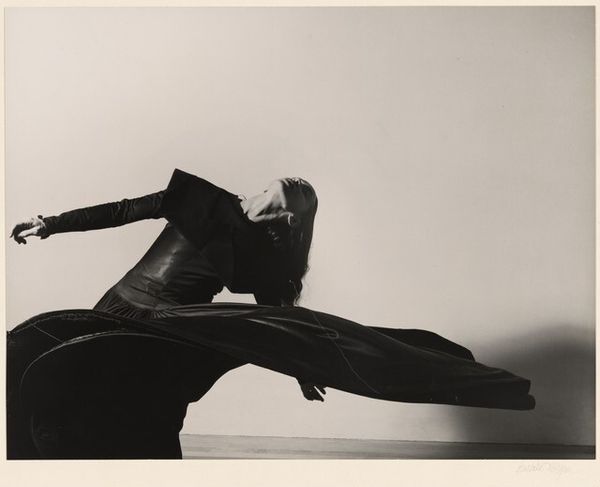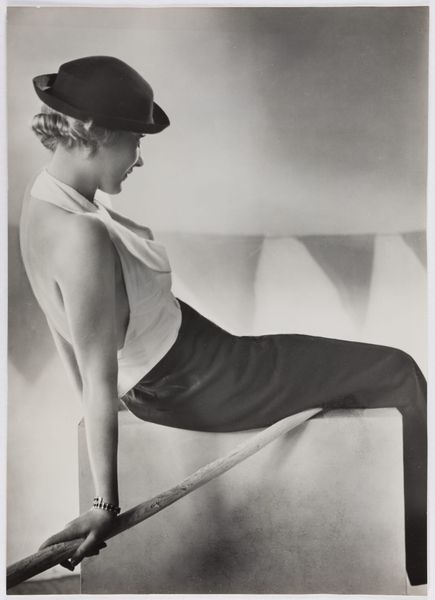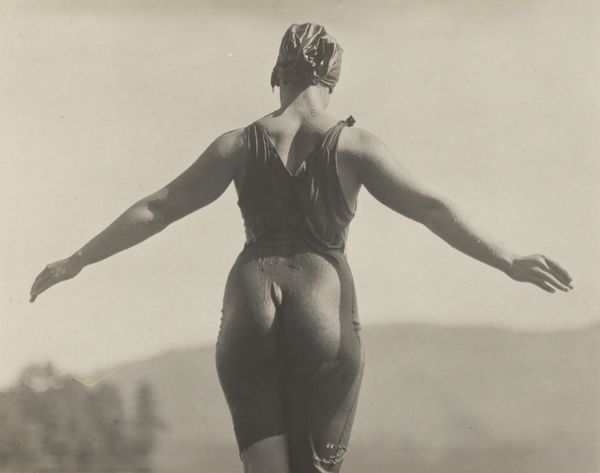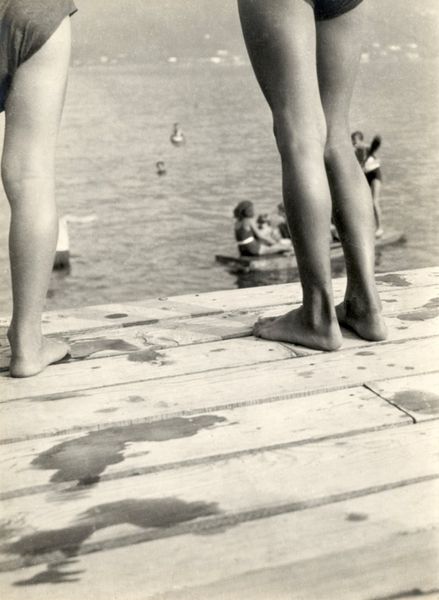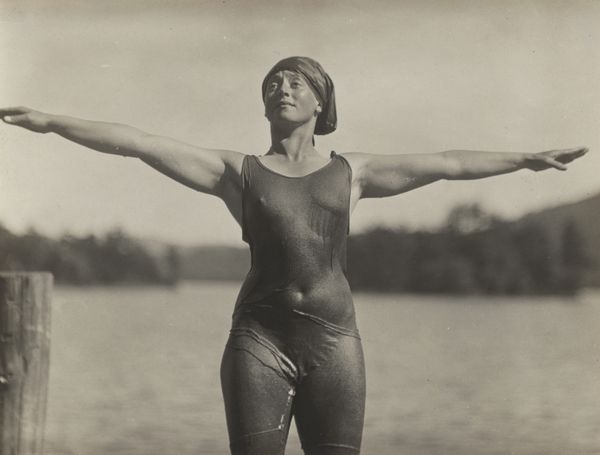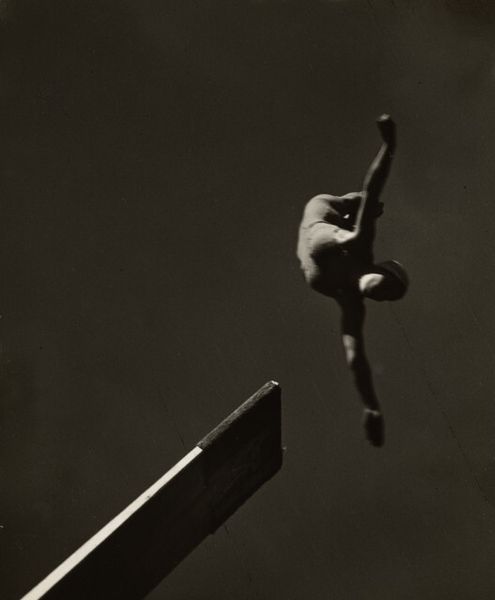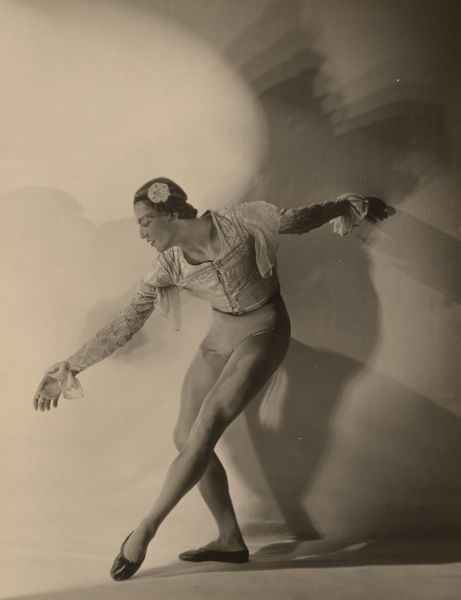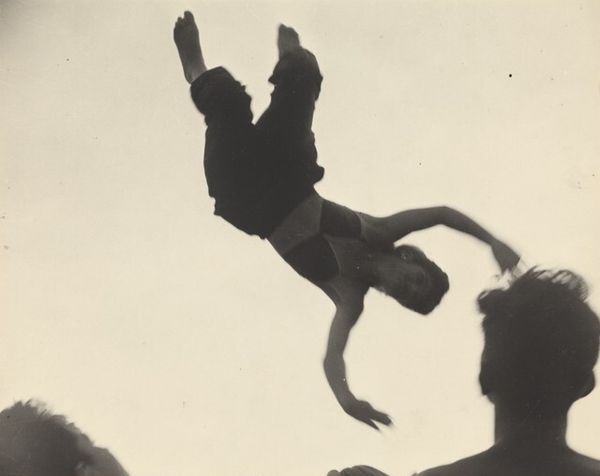
photography, gelatin-silver-print
#
portrait
#
black and white photography
#
landscape
#
photography
#
black and white
#
gelatin-silver-print
#
monochrome photography
#
monochrome
#
modernism
#
monochrome
Dimensions: sheet (trimmed to image): 11.7 × 8.8 cm (4 5/8 × 3 7/16 in.) mount: 34.2 × 27.2 cm (13 7/16 × 10 11/16 in.)
Copyright: National Gallery of Art: CC0 1.0
Editor: Here we have Alfred Stieglitz's gelatin silver print, "Rebecca Salsbury Strand," created in 1922. It's a striking black and white photograph, almost sculptural in its depiction of a woman bending forward. The starkness is so compelling, but I'm curious about its place within the art world at the time. What's your take on this piece? Curator: Well, considering Stieglitz's influence, it's more than just a portrait; it's a declaration. He championed photography as a fine art. This image, stripped of color, focuses intently on form and texture, reflecting Modernism's move towards abstraction and its departure from painterly aesthetics. What do you make of its title lacking the qualifier "portrait"? Editor: I suppose the absence pushes it beyond just capturing a likeness. It's like he's inviting viewers to consider Rebecca Strand, not as an individual, but as a study in form, almost an object within the landscape. It feels daring, maybe even impersonal. Curator: Daring, precisely! And consider the historical context. Stieglitz promoted art through his galleries, “291” and others. "Rebecca Salsbury Strand" would have been presented amidst discussions about the role of the artist, the validity of photography, and the shifting socio-political landscape after World War I. Think about whose stories and images were valued then, and how Stieglitz's choices might challenge established norms. Editor: So it’s making a statement about photography’s artistic merit and perhaps subtly, about the subject, Rebecca, being presented in this modern, unvarnished way. I'm beginning to see how this image actively participates in these broader cultural dialogues. Curator: Exactly. It's less about the "who" and more about the "how" and "why" it’s presented and framed within the socio-political forces operating. It forces us to confront what we value and *how* those values get formed. Editor: I really hadn't considered how actively a portrait could engage in public debates beyond its surface depiction. Curator: It truly transforms my own viewing of photographs. Editor: Me too, it’s so exciting to hear about its potential as a tool to shift how we look at the public role of art.
Comments
No comments
Be the first to comment and join the conversation on the ultimate creative platform.
